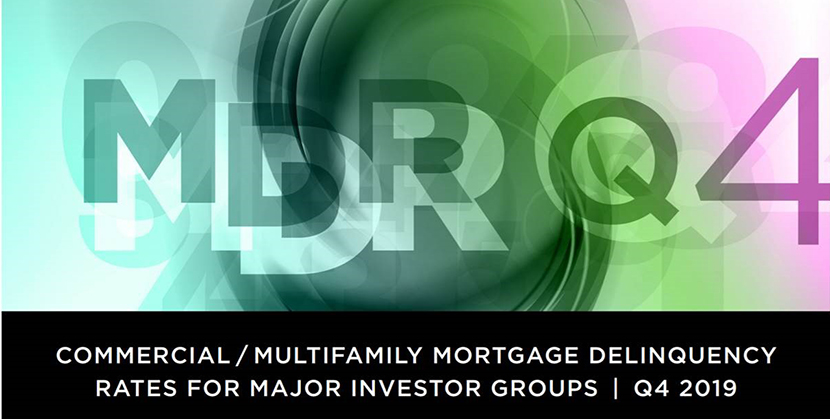
MBA: 4Q Commercial/Multifamily Mortgage Delinquencies Remain Low

Commercial and multifamily mortgage delinquencies remained low in the fourth quarter, according to the Mortgage Bankers Association’s Commercial/Multifamily Delinquency Report.
“Commercial and multifamily mortgages ended the fourth quarter of 2019 much the way they started the year–at or near record low delinquency rates,” said Jamie Woodwell, MBA Vice President of Commercial Real Estate Research. “The key drivers–solid property fundamentals, strong property values and low interest rates–continue to support the market. It is too early to tell if and how concerns tied to the coronavirus and the related global slowdown will affect commercial real estate loan performance, but the corresponding drop in financing costs are providing additional near-term support.”
The MBA quarterly analysis looks at commercial/multifamily delinquency rates for five of the largest investor-groups: commercial banks and thrifts; commercial mortgage-backed securities; life insurance companies; Fannie Mae; and Freddie Mac. Together, these groups hold more than 80 percent of commercial/multifamily mortgage debt outstanding.
Based on the unpaid principal balance (UPB) of loans, delinquency rates for each group at the end of the fourth quarter were as follows:
–Banks and thrifts (90 or more days delinquent or in non-accrual): 0.42 percent, a decrease of 0.03 percentage points from the third quarter;
–Life company portfolios (60 or more days delinquent): 0.04 percent, an increase of 0.01 from the third quarter;
–Fannie Mae (60 or more days delinquent): 0.04 percent, a decrease of 0.02 percentage points from the third quarter;
–Freddie Mac (60 or more days delinquent): 0.08 percent, an increase of 0.04 from the third quarter; and
–CMBS (30 or more days delinquent or in REO): 2.07 percent, a decrease of 0.22 percentage points from the third quarter.
The MBA analysis incorporates the measures used by each individual investor group to track the performance of their loans. Because each investor group tracks delinquencies in its own way, delinquency rates are not comparable from one group to another.
Construction and development loans are generally not included in the numbers presented in this report, but are included in many regulatory definitions of “commercial real estate,” despite being often backed by single-family residential development projects rather than by office buildings, apartment buildings, shopping centers or other income-producing properties. The Federal Deposit Insurance Corp. delinquency rates for bank and thrift held mortgages reported here do include loans backed by owner-occupied commercial properties. Differences between the delinquencies measures are detailed in Appendix A.
To view the report, visit https://www.mba.org/Documents/Research/4Q19CMFDelinquency.pdf.
